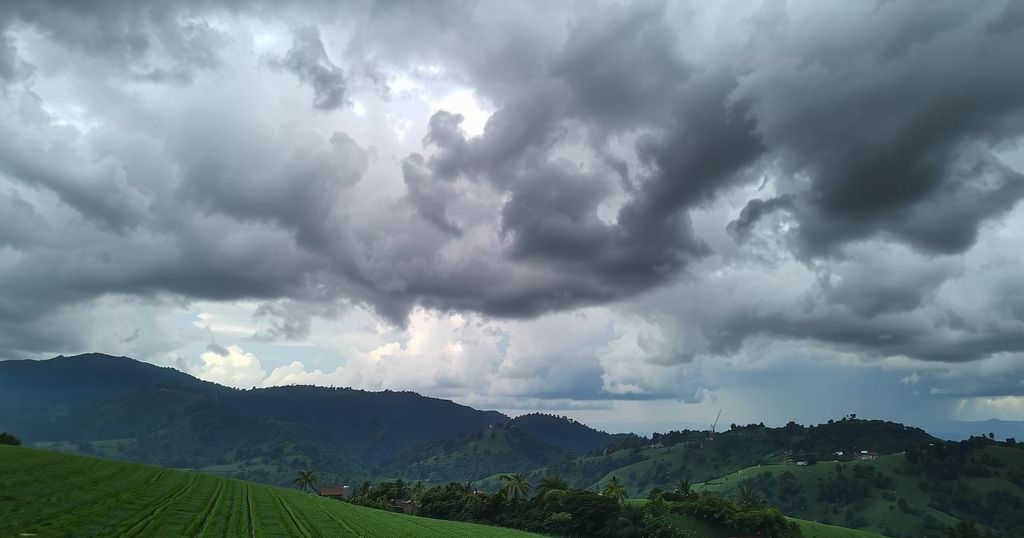Rainfall Deficits Threaten Brazil’s Second-Season Corn Crop

Brazil is experiencing drier conditions negatively affecting the safrinha corn crop, with regions facing significant rainfall deficits. While some areas may receive light rainfall, it will remain below normal levels. Predictions indicate an ongoing drought situation, exacerbated by inaccurate rainfall models, threatening agricultural output.
Brazil is currently experiencing drier conditions that pose substantial risks, particularly for the second-season corn crop (safrinha). Although soybean harvesting is concluding favorably, the anticipated wet season rainfall necessary for the safrinha’s development has been disappointing. Farmers across various states including Parana, Mato Grosso, Minas Gerais, and Piaui heavily depend on consistent rainfall throughout March to build soil moisture needed for robust corn growth.
According to DTN, Brazil’s agricultural regions are contending with 30-, 60-, and 90-day rainfall deficits. While Mato Grosso, noted for being the largest producer of safrinha corn, remains closer to normal precipitation levels, eastern areas have recorded figures as low as 20% of typical rainfall. Some locations have experienced less than an inch of rain in the past month, potentially jeopardizing early corn development.
Although continued rainfall through the wet season, which ends in early May, could mitigate some moisture deficits, it is unlikely to rectify the ongoing drought issues significant in various states. Furthermore, mid- to late-April, when corn typically pollinates, coincides with a reduction in wet-season rainfall, requiring sufficient subsoil moisture for kernel filling and production.
Recent satellite data from NOAA and NASA illustrates the concerning drought status, primarily affecting regions outside Mato Grosso. Numerous locales in the south-central, eastern, and northern areas are currently experiencing drought conditions. Prospects for rainfall are more optimistic in the upcoming week, with a weather front delivering scattered showers from Mato Grosso to Minas Gerais, potentially extending through the end of March.
Forecasts suggest rainfalls of 1 to 2 inches, with optimal areas in driest parts of Minas Gerais receiving up to 3 inches. However, this remains below the expected average for this period, mainly in southern Goias and southeastern Mato Grosso. Such rainfall may merely maintain existing moisture levels rather than substantially improving them, and future forecasts indicate further dry conditions in April.
Models have inaccurately predicted significant rainfall along the central Brazil front for the last week, illustrating only isolated showers instead of widespread rainfall. Forecasted precipitation amounts of 2 to 3 inches recently have yielded meager results, predominantly around one inch or less. Continued overestimations of rainfall could exacerbate challenges for Brazilian producers, further endangering crop viability.
In summary, Brazil is facing alarming dry conditions that threaten the second-season corn crop, despite concluding favorable soybean harvests. While potential rainfall may occur in the upcoming week, it is unlikely to alleviate the significant moisture deficits experienced across many regions. The prediction models’ inconsistencies exacerbate concerns regarding future crop viability. Continuous monitoring and adjustments will be critical for producers as conditions evolve.
Original Source: www.dtnpf.com








